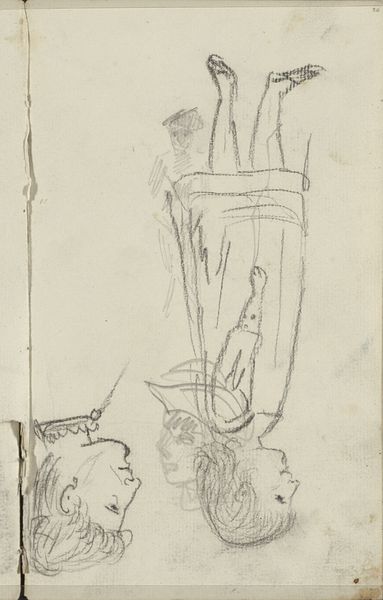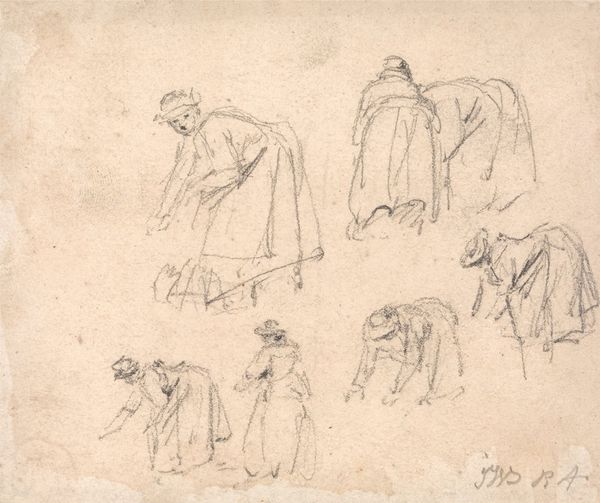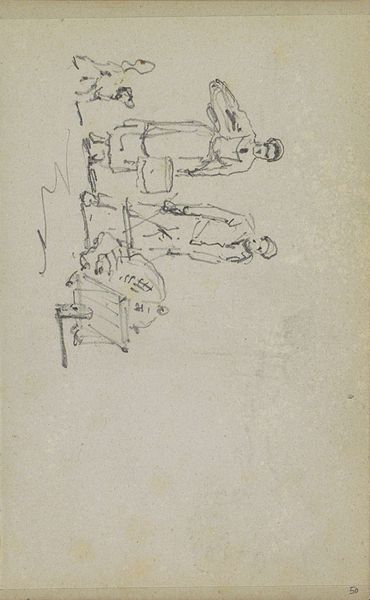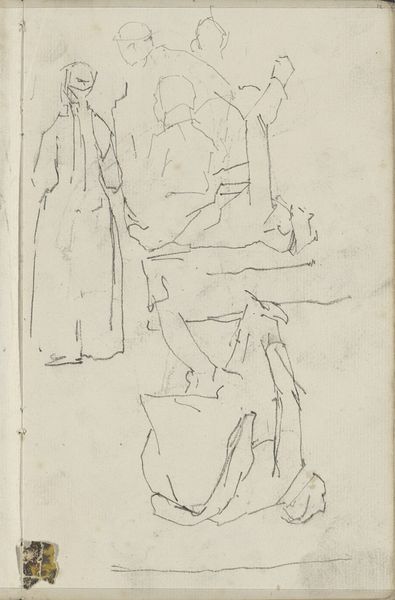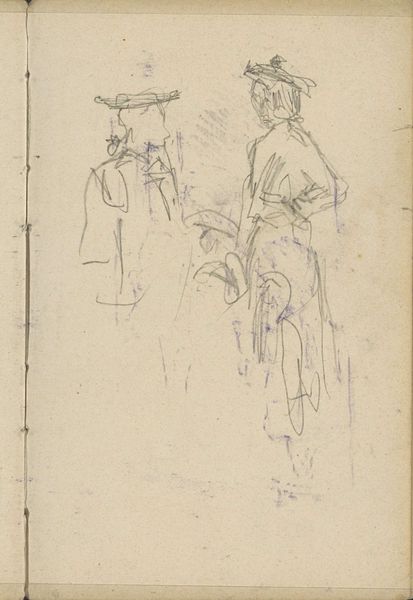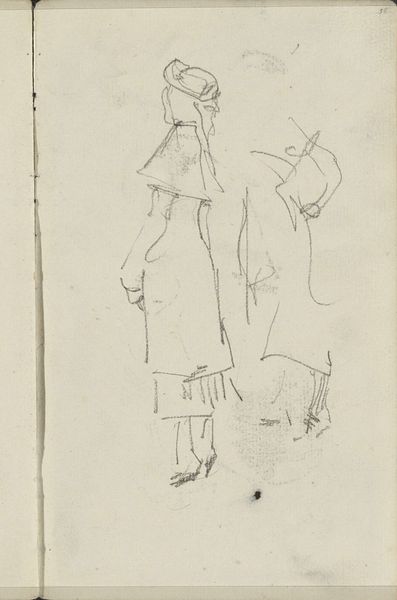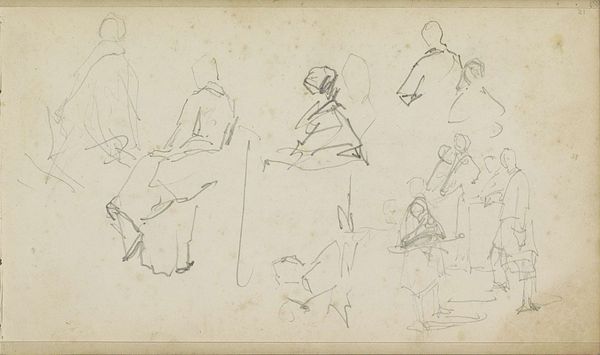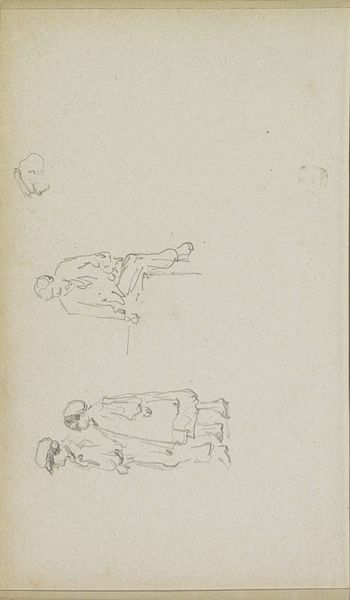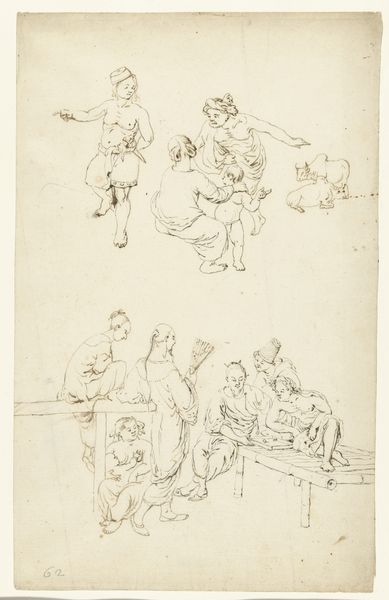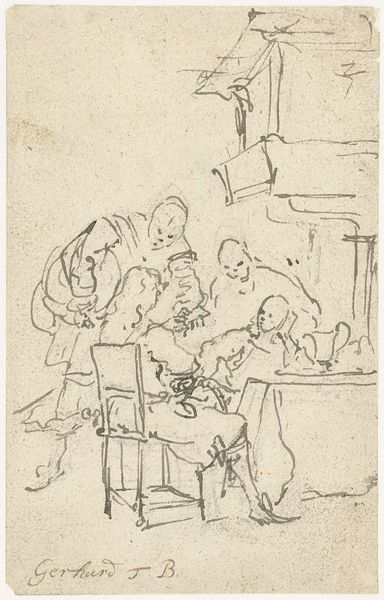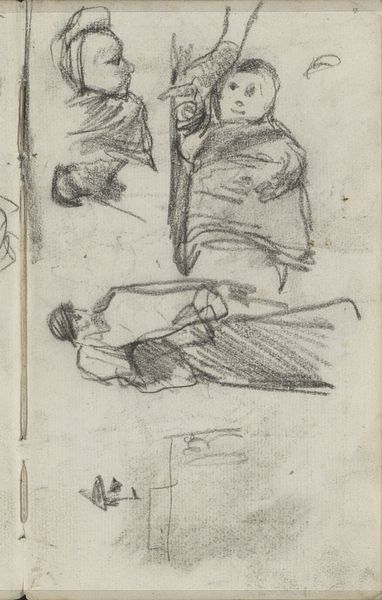
#
light pencil work
#
quirky sketch
#
sketch book
#
personal sketchbook
#
idea generation sketch
#
sketchwork
#
sketchbook drawing
#
storyboard and sketchbook work
#
sketchbook art
#
initial sketch
Dimensions: height 101 mm, width 93 mm, height 230 mm, width 162 mm
Copyright: Rijks Museum: Open Domain
Curator: Gustave Joseph Chéret's “Twee stèles met zittende figuren,” or "Two Steles with Seated Figures," dating from 1870 to 1894, strikes me as a study in contrasts. Editor: Absolutely, the immediate impression is whimsical, almost dreamlike. There’s a lightness in the line work that belies the rigidity implied by "steles." Curator: Indeed, observe how the figures, seemingly simple at first glance, reveal an intentional juxtaposition of solidity and ephemerality. The steles themselves are rendered with stark, almost brutal, lines, establishing a vertical tension. Editor: The contrast is striking. Look at the figure seated on the right, seemingly engrossed in reading or writing, a subtle allusion to knowledge and learning contrasted with the roughhewn steles looming over both scenes. I wonder if Chéret was subtly exploring themes of cultural memory here? The sketch evokes primitive idols. Curator: An interesting point. Consider though how the lack of concrete detail draws us to the materiality of the sketch itself. The delicate application of the medium—the subtle gradations of shade—almost abstracts the iconographic content, reducing it to a pure study of form. Notice that each line defines mass while appearing independently on the canvas. Editor: Yet that lightness opens a space for interpretation. The figures’ elongated features feel deliberately stylized, invoking a timeless quality, almost referencing ancient religious sculptures. Even that undeciphered object that figure on the right is focused upon could be any tome from throughout civilization. It really draws the viewer in! Curator: While that narrative element undeniably exists, the piece succeeds foremost through its construction. Chéret’s focus seems dedicated to line, its ability to contain and suggest depth through very subtle applications of shading to make two nearly abstract planes, the sitting figures and the titular steles, converse and complement each other. Editor: Perhaps it's a balance—the universal language of form meeting cultural archetypes, expressed through deft strokes. The scene sparks questions of legacy versus individual thought, and how civilization continually rebuilds itself on history's firm foundation. Curator: Precisely; a tension deftly held in aesthetic equipoise. Editor: A fascinating sketch; much to contemplate within its slender lines.
Comments
No comments
Be the first to comment and join the conversation on the ultimate creative platform.
